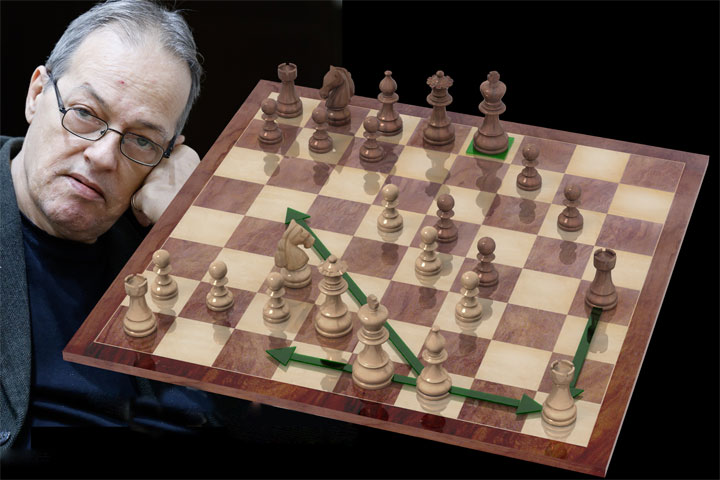Attacking the King – Crime and Punishment
Concept
There are two basic motivations behind castling:
- The king is transferred to a safe place, away from immediate danger, waiting for an endgame to arise, in which the king can play an important role.
- By its departure from the central files the king enables all the other pieces – particularly the rooks – to cooperate.
History
Around the start of the 20th century, attacks against an uncastled king were very common and often crowned with success, mostly due to complete ignorance of the defensive potential inherent in a position and the techniques to make use of it.
Today, every chess player is aware of and makes full use of such concepts, thus refuting aggressive ventures that do not fulfil 'basic requirements'.
Basic Requirements
But what are these basic requirements necessary for an attack to succeed?
- Superiority, either material or positional, on the sector of the board where the attack is to be carried out. By the term 'material superiority' we imply the more active placement and easy access of attacking forces to that sector and not necessarily an overall material advantage that has come about after capturing enemy pieces.
This principle is of a very dynamic nature, as the material balance in one part of the board can easily be disturbed in the defender's favour by the successful transfer of defensive forces to that sector.
- Lack of defensive pieces or pawns around the king to come under attack.
- 3. Control of the centre, or at least increased stability in that area. In most cases where this requirement is not met, the attack is doomed to fail.
Ways of an Attack
An attack against an uncastled king can be carried out in several different ways. As a rule, the main attacking methods are:
- Attack down the file where the target is temporarily situated; this is usually the e-file.
- Attack via neighbouring squares protected only by the king; the most common such square is f7 (f2).
- Prevention of castling, either permanent or temporary, so that the attack acquires a more or less permanent nature.
Obligations
Naturally, meeting all the basic requirements is alone not enough to bring the desired result. The side attacking an uncastled king also faces some other obligations:
- To open lines.
- To transfer more forces to the relevant area in order to strengthen the attack.
- To cause further a weakening of the opponent's defensive shield.
- To avoid the exchange of potentially useful attacking pieces.
- To exchange the opponent's potentially useful defensive pieces.
- To focus on the attack against the opponent's king and not to be distracted by some irrelevant material gain.
Defence
On the other hand, the defender must also follow certain guidelines in order to fight successfully for survival:
- To strengthen his king's defence.
- To transfer the king to a safe place.
- To switch, when appropriate, between active and passive defence.
- To counterattack.
- To evaluate the opponent's threats calmly and objectively.
Concessions
Launching an attack involves certain concessions. These can be material (sacrifices) or positional (creation of permanent weaknesses, etc.). Thus, the attacking side must strike a balance between fuelling the attack and making as few such concessions as possible, so that a possible failure of the attack will not leave his position devastated.
Naturally, this applies only while the final outcome of the attack is unclear; once it becomes clear that the opponent cannot defend successfully, further restraint is unnecessary.
Generally, every attack causes a more or less serious disturbance of the equilibrium, which is very rarely restored because the attacker often chooses to burn his bridges behind him.
In the previous game I was the hunter; in the next one I became the haunted! Well, chess, as life, is not a one-sided mater…




